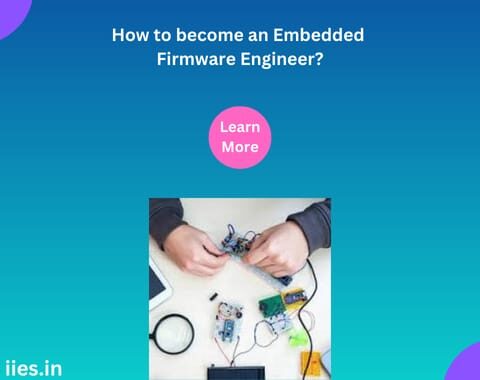
Becoming an Embedded Firmware Engineer offers an exciting pathway into the heart of technological innovation. This introductory segment provides a glimpse into the pivotal role played by Embedded Firmware Engineers in shaping the digital landscape. These engineers are tasked with developing and optimizing the software that runs on embedded systems, which are specialized computing devices often found in everything from consumer electronics to industrial machinery. Their work bridges the gap between hardware and software, ensuring seamless functionality and optimal performance.
Embedded Firmware Engineers are responsible for designing, implementing, and maintaining the software that controls embedded systems. Their core responsibilities include developing firmware for microcontrollers and microprocessors, optimizing code for resource-constrained environments, and ensuring the reliability and security of embedded software. These professionals are in high demand across a wide range of industries, including automotive, aerospace, medical devices, and consumer electronics, where embedded systems play a critical role in product functionality and performance.
While Embedded Firmware Engineers share some similarities with software developers, there are key differences that set them apart. Unlike traditional software developers who primarily focus on applications running on general-purpose computers, Embedded Firmware Engineers must contend with the unique challenges posed by embedded systems, such as limited processing power, memory, and energy constraints. As a result, they often work closer to the hardware, requiring a deeper understanding of hardware architectures, low-level programming, and real-time operating systems.
Embarking on a career as an Embedded Firmware Engineer typically begins with obtaining a relevant degree or certification. Degrees in Electrical Engineering, Computer Engineering, or Computer Science provide a strong foundation for this field. Additionally, specialized courses in Embedded Systems, Microcontroller Programming, and Digital Signal Processing are essential for gaining the necessary skills and knowledge.
In recent years, online courses and bootcamps specializing in embedded systems have become increasingly popular, offering flexible and accessible learning options for aspiring engineers. These programs cover a wide range of topics, from basic embedded programming concepts to advanced techniques in firmware development.
Technical proficiency is paramount for success as an Embedded Firmware Engineer. Mastery of programming languages such as C language/C++, assembly language, and hardware description languages (HDLs) is essential for developing efficient and reliable firmware. Additionally, a solid understanding of microcontrollers, microprocessors, real-time operating systems (RTOS), and low-level programming is crucial for optimizing code and maximizing system performance. Familiarity with debugging tools and techniques is also indispensable for identifying and resolving software issues in embedded systems.
While academic coursework provides a solid theoretical foundation, practical experience is equally important for aspiring Embedded Firmware Engineers. Engaging in hands-on projects and internships allows individuals to apply their knowledge in real-world settings and develop valuable problem-solving skills. DIY projects, such as building a home automation system or designing a small-scale embedded device, provide excellent opportunities to showcase skills and build a portfolio. Additionally, participating in open-source projects and contributing to firmware development communities fosters collaboration and exposes engineers to a diverse range of challenges and solutions.
Embedded Firmware Engineers rely on a variety of tools and technologies to develop and debug firmware for embedded systems. Popular development environments such as Keil, MPLAB, and Arduino IDE provide comprehensive toolsets for writing, compiling, and testing firmware code. Hardware tools such as oscilloscopes, logic analyzers, and development boards are essential for debugging hardware and software issues. Software tools like version control systems, compilers, and debuggers streamline the development process and ensure code quality and reliability.
Creating a strong portfolio is essential for showcasing skills and experience to potential employers. Highlighting key projects and experiences in a resume demonstrates practical knowledge and expertise in embedded firmware development. Establishing a professional online presence on platforms such as LinkedIn and GitHub allows engineers to connect with peers and showcase their work to a wider audience. Detailed project documentation and code samples provide valuable insights into an engineer’s problem-solving approach and coding style, helping to distinguish them from other candidates.
Networking and professional development play a crucial role in advancing a career as an Embedded Firmware Engineer. Joining professional organizations such as the IEEE and attending industry conferences and events provides opportunities to connect with fellow engineers, stay updated on the latest developments in the field, and explore potential job opportunities. Online forums and communities such as Reddit and Stack Overflow offer valuable resources for seeking advice, sharing knowledge, and collaborating on projects. Continuing education through workshops, webinars, and advanced certifications ensures that engineers stay abreast of emerging technologies and trends in embedded firmware engineering.
Navigating the job market can be daunting, but with the right strategies, aspiring Embedded Firmware Engineers can position themselves for success. Writing an effective resume and cover letter that highlights relevant skills and experiences is essential for capturing the attention of employers. Preparing for technical interviews by reviewing common interview questions and practicing problem-solving exercises helps to demonstrate proficiency and expertise in embedded firmware development. Understanding job descriptions and salary expectations allows engineers to identify opportunities that align with their skills and career goals.
Embedded Firmware Engineers face a variety of challenges in their work, from dealing with hardware limitations to ensuring the security and reliability of embedded software. Emerging trends and technologies such as the Internet of Things (IoT) and artificial intelligence (AI) present exciting opportunities for innovation in embedded systems. The future outlook for Embedded Firmware Engineers is bright, with increasing demand for skilled professionals in fields such as autonomous vehicles, smart devices, and industrial automation. With ongoing advancements in technology and continuous learning, Embedded Firmware Engineers are well-positioned to drive future innovation and make a meaningful impact in the world.
Becoming an Embedded Firmware Engineer is a rewarding journey that offers opportunities for creativity, innovation, and impact. By following the steps outlined in this guide and staying curious, aspiring engineers can build successful careers in embedded firmware engineering and contribute to the advancement of technology in today’s tech-driven world.
Indian Institute of Embedded Systems – IIES